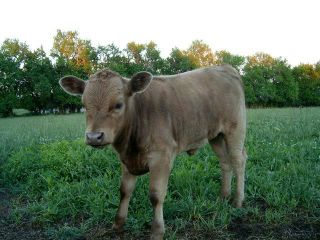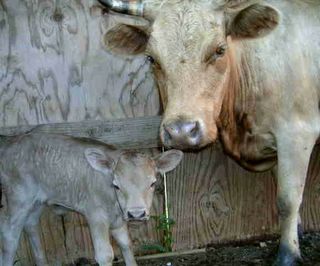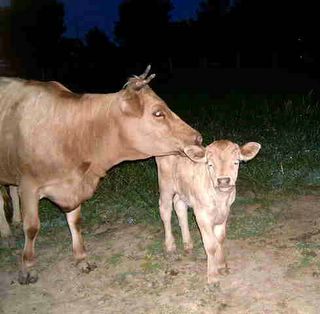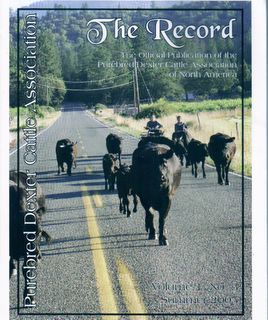News-Leader.com | True Ozarks
Two-year study indicates cows given shade have higher rate of pregnancy.
Some say shade is not important to beef cattle but Eldon Cole, livestock specialist, University of Missouri Extension, says research shows shade is critical to beef cattle in southwest Missouri.
Two years of shade research has been carried out at the University of Missouri's Southwest Research Center near Mount Vernon with impressive results favoring shade.
In 2000, a group of spring-calving cows were compared using small portable shades and no shade. The trial was done on both endophyte-infected and endophyte-free fescue.
The greatest difference showed up on the infected fescue where the shaded cows outgained the others by 0.72 pound per day for 84 days. Calves nursing the shaded cows also made slightly better (but less significant) gains of 0.17 pound per day.
The most dramatic finding of the shade study was the difference in pregnancy rates at the end of the summer. The overall pregnancy rate was 87.5 percent for the cows given shade while it was only 50 percent for cows with no shade.
"The difference was more pronounced when only the endophyte-infected pastures were considered. The elevated body temperature is likely the culprit for the drop in percentage bred," said Cole.
The following year, the same trial was conducted at Southwest Center using 550-pound steers. The shaded steers gained 0.2 pound more per day for 84 days than the unshaded ones.
As with the cows, the difference increased up to 0.35 pound per day when the shade, no-shade comparison was made on the "hot" fescue pasture.
"Trials in other states have given similar responses regarding animal gains, pregnancy rates as well as milk production in dairy cows," said Cole.
Research findings on cattle and shade, including tests in Missouri and Arkansas, confirm that natural shade from trees gives better animal performance than shade from constructed shades.
"Twenty-five square feet per adult cow is a bare minimum for shade space with 30 to 40 feet preferred to prevent crowding and poor air movement," said Cole.
Research also shows that dark-haired and heavier-coated cattle benefit from shade more than those with lighter coats.
"Bull fertility appears to drop in hot weather, so shade may also be of some benefit if you're in the midst of the breeding season," said Cole.
It is also important to know that some breeds, such as the Brahman and Brahman crosses, tolerate the heat better than others. Likewise, some animals within a breed handle heat better than others.
"Slick, short-haired cattle grazing warm-season grasses will suffer less production loss than those on endophyte-infected fescue. Fall-calving cows tend to be more tolerant of the heat than spring-calvers," said Cole.
David Burton, civic communication specialist for University of Missouri Extension, 833 Boonville Ave., Springfield, MO 65802, can be reached at 862-9284 or via e-mail: burtond@missouri.edu.
Copyright © 2005, The Springfield News-Leader, a Gannett Company

















